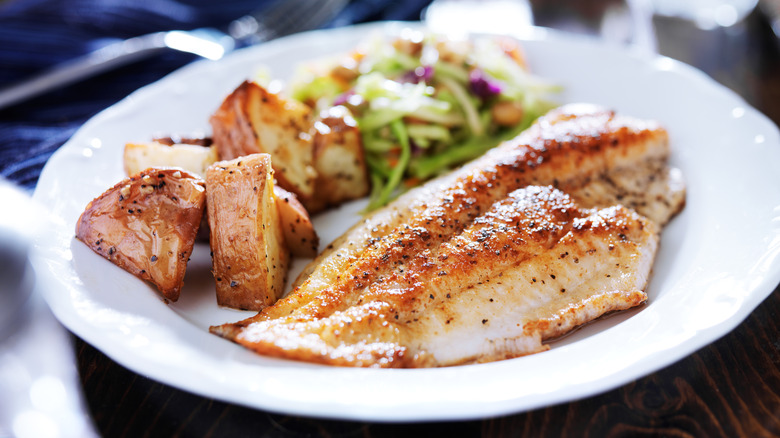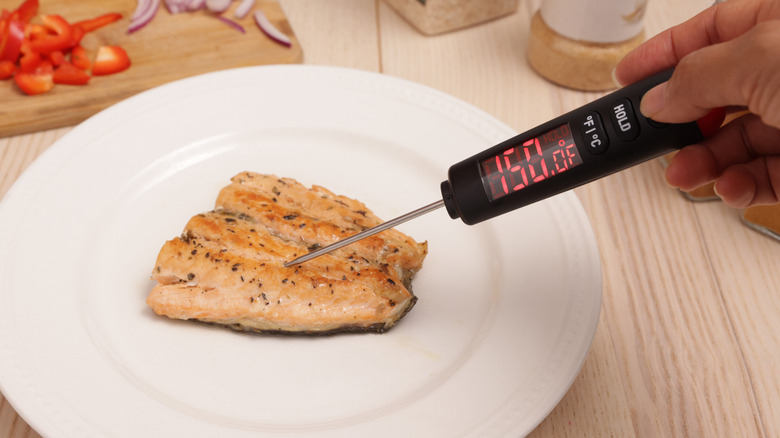Stop Flaking Your Fish To Test Doneness
We may receive a commission on purchases made from links.
Cooking fish can be a challenge. On the one hand, most fillets cook quickly. On the other hand, overcooking is a definite possibility — and no one likes dried-out salmon or cod. One method of determining doneness involves taking a fork to the fish. If it flakes, it's ready. But is it actually overdone? According to Ryan Ratino, executive chef and owner of Hive Hospitality (Bresca; JÔNT; Maass at Four Seasons Fort Lauderdale; Omo by JÔNT; Ode by JÔNT; and Orion in Los Angeles), it definitely is.
Ratino told Chowhound that if the fish has been fully cooked in the oven, it's already too late for perfection. Instead he suggests using a meat thermometer and removing the fish before the internal temperature reaches the USDA-recommended 145 degrees Fahrenheit. This allows it to finish cooking away from the heat as it rests. After all, overcooking and cutting the fillet without resting it are two of the big mistakes to avoid when cooking fish.
Because fish can morph from moist to dry in a heartbeat, monitoring its progress is essential — particularly when it comes to thick steaks or fillets, and more expensive species. You can test for doneness by watching for the albumin — that white goo that oozes from the sides and top of the fish — but even that can be a sign that your fish is drying out. (You can brine your salmon if you're tired of the white stuff, but remember that albumin won't seep out.)
Keep an eye on the temperature of your fish
"If you would like fully cooked fish, when the albumin releases, you know it is done," says chef Ryan Ratino. But he adds, "To me this is overcooked and I would choose to use a probe instead." The reason is that fish continues to cook for a little while even after it's been moved off the heat. It's also why you always want to let your steak rest. As it sits, that moisture and fat is brought back into the meat. If your fish is fully cooked when you take it out of the oven, it's going to overcook as it sits on the counter. The trick is to remove it from heat a little before it's ready.
Using Ratino's suggestion to employ a quality meat probe — like a professional meat thermometer that shows accurate internal temperatures — ensures you're pulling your fish out of the oven at just the right moment. While the USDA recommends a serving temperature of 145 degrees Fahrenheit, it doesn't have to get there in the oven. Instead, Ratino advises that you remove the fish from the heat when it reaches 110 to 115 degrees Fahrenheit, and let it sit for a few minutes before serving. It's one way to be sure that your salmon is perfectly cooked.

